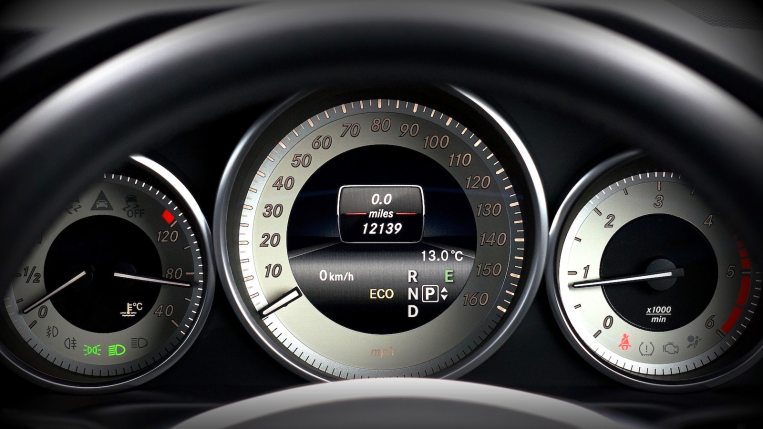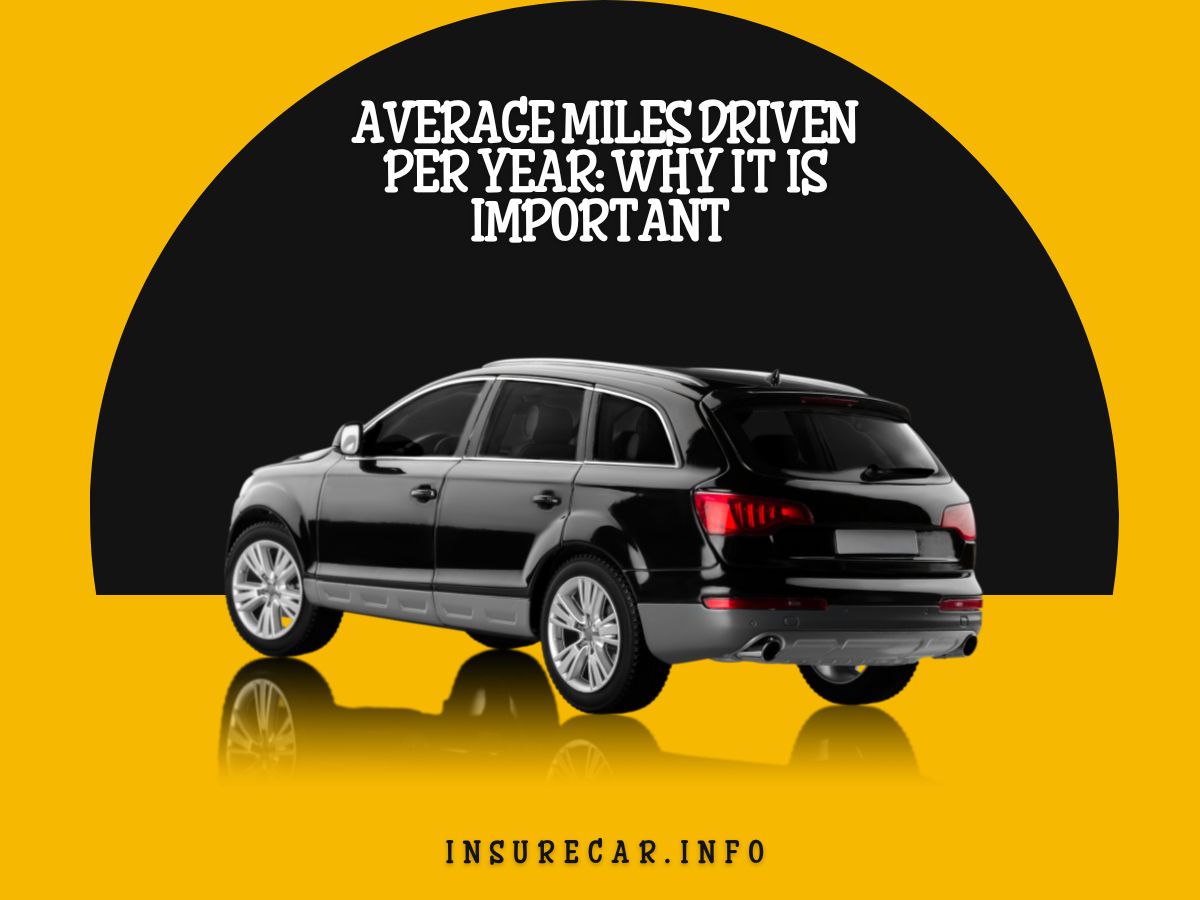
average annual miles indicate the act of miles drivers typically travel during the year. You can casually use this number to determine whether a fomite gets used less than or more than common .
But car indemnity companies use average annual miles datum points as one factor that influences your pace. Why ? Because the more you drive, the more likely you ’ ll be involved in an accident .
Understanding your average mileage per year and other driving habits can help you keep your indemnity rates in check.
What Are Average Miles Driven Per Year?
The United States Department of Transportation Federal Highway Administration said that the median person drove 14,263 miles per class in 2019. That ’ s roughly 1,200 miles per month per driver or about 39 miles per day. By comparison, the DOT said the average annual miles was 13,476 in 2018 .
People rely on their cars because public transportation systems change by localization. Without huge public transportation system systems to rely on for many Americans, cars allow many drivers to get to work, school, or diversion .
According to the United States Department of Transportation Federal Highway Administration, Americans drove more than 3.26 trillion miles in 2019. This number has dropped drastically since the COVID-19 pandemic forced lockdowns beginning in 2020. That ’ randomness when the DOT said the modal miles compulsive fell 10.3 % .
How Does Annual Mileage Affect Insurance Rates?
Your annual mileage directly affects how a lot you pay for car insurance. Motorists who spend more time on the road have a greater risk of filing an policy claim than infrequent drivers who are less likely to have an accident .
policy companies use the number of miles you drive each year — along with other criteria such as age and experience — to predict your gamble and set your premium accordingly. typically, insurers ask about average annual miles when drivers apply for a policy. It ’ s best to make an honest mileage estimate for how much you drive .
While there might not be a legal consequence for underestimating your annual mileage on the application, it could become baffling if you get into an accident. The insurance company will learn the vehicle ’ second mileage if a claim gets made. Some companies request odometer reading updates. other carriers may perform random mileage checks to avoid “ soft fraud ” when figures reach below average miles .
Be indisputable to let your insurance company know if your drive circumstances deepen. Having a shorter change might produce a lower premium. For commuting, business, or joy, the type of driving you do affects how much you pay for car policy coverage .
What Are Commuting Miles?
Commuting to work is the primary reason most people drive an automobile. “ Commuting miles ” is the condition used for the number of miles it takes for a policyholder to get to work and back. insurance companies use the calculate to help determine whether an applicant ’ sulfur annual mileage calculate is naturalistic .
insurance carriers much allow up to 20 miles each way for commuting before increasing rates. daily commuters who travel more than that might see higher rates because of extra time spent on the road, which frequently occurs in densely populate areas with higher instances of accidents .
Do Different Demographics Play a Role in Annual Mileage?
Actuaries at indemnity companies crunch numbers, predict the risk among policyholders, and sic policy premiums accordingly.
The most recent figures from the DOT read significant differences in driving demeanor exist according to gender and age group .
- Overall, men drive 6,000 more miles per year than women.
- Men ages 34-54 drive the most — almost 19,000 annual miles.
- Women over age 65 drive the least — less than 5,000 miles per year.
- Working-age men drive about 7,500 more miles than working-age women each year.
- Drivers ages 16 to 19 and adults over 65 each drive an average of 7,600 miles annually.
- Motorists drive more each year until retirement when annual mileage drops by 30%.
What Do Insurance Companies Consider Low Mileage?
infrequent drivers may find savings if they drive less than the average annual mileage. Insurers typically give the highest discounts to drivers who log less than 7,000 miles per annum on their vehicles .
Low-mileage car policy works by tracking miles electrically, either with a telematics device installed in the vehicle or through a mobile app installed on your smartphone. Premiums for this type of policy involve a directly monthly rate and a small fee per nautical mile .
Some motorists might have privacy concerns about the chase, while others find the cost savings outweigh any sensed intrusion. Don ’ t worry, though ; they don ’ triiodothyronine care about where you are driving to, equitable how many miles it takes you to get there .
choice insurers offer standalone low-mileage policies, or you can enroll in mileage-based rebate programs through a standard indemnity carrier .
Low-Mileage Discounts and Other Savings
What qualifies a moo mileage varies with insurance companies. Check with your carrier for potential mileage-based car policy discounts. Reductions can vary by state of matter, but driving fewer than average annual miles may bring about 3 % in policy savings .
early policy based on vehicle usage can create savings of up to 15 % by using telematic devices, exchangeable to those used for pay-as-you-go low-mileage policies .
The COVID-19 pandemic boosted consumer interest in usage-based policy policies using telematics. The increase in people working from base or unemployed and the cancellation of public events led to many cars parked in garages and driveways rather of being driven around town. many owners looked at monitoring as a way to save money on vehicles not being used .
Some policy companies promote usage-based insurance and telematics to monitor adolescent drivers and offer tips on vehicle maintenance and safe drive .
Each State’s Average Annual Mileage
More than 228 million drivers create averages within the 50 states and the District of Columbia. In the District of Columbia, drivers travel about 7,000 miles annually, the lowest modal in the U.S. Residents of Wyoming clock the highest with an average of more than 24,000 driving miles per year .
- Alabama: 17,817
- Alaska: 11,112
- Arizona: 13,090
- Arkansas: 17,224
- California: 12,524
- Colorado: 12,899
- Connecticut: 12,117
- Delaware: 12,609
- District of Columbia: 7,013
- Florida: 14,557
- Georgia: 18,334
- Hawaii: 11,688
- Idaho: 14,417
- Illinois: 12,580
- Indiana: 18,024
- Iowa: 14,745
- Kansas: 14,781
- Kentucky: 16,305
- Louisiana: 14,951
- Maine: 14,216
- Maryland: 13,490
- Massachusetts: 13,109
- Michigan: 14,307
- Minnesota: 17,909
- Mississippi: 19,966
- Missouri: 18,522
- Montana: 15,880
- Nebraska: 14,846
- Nevada: 14,015
- New Hampshire: 11,570
- New Jersey: 12,263
- New Mexico: 19,157
- New York: 10,167
- North Carolina: 16,073
- North Dakota: 17,671
- Ohio: 14,278
- Oklahoma: 17,699
- Oregon: 12,218
- Pennsylvania: 11,445
- Rhode Island: 9,961
- South Carolina: 14,941
- South Dakota: 15,542
- Tennessee: 15,287
- Texas: 16,172
- Utah: 15,516
- Vermont: 13,004
- Virginia: 14,509
- Washington: 10,949
- West Virginia: 16,876
- Wisconsin: 15,442
- Wyoming: 24,068
Does Increased Average Annual Mileage Impact Car Prices?
The national average annual mileage in 2011 was about 4,000 miles less than the most late average in 2019. This increase in miles drive per year impacts the way Americans choose to buy cars, besides, choosing more fuel-efficient vehicles and electric vehicles .
In addition, when you sell a cable car, high or abject mileage will impact the sales price, in addition to vehicle disparagement and a host of other factors.
Drivers who lease their vehicle must recognize how many miles they drive. Leases normally have annual mileage allowances of 10,000 miles or 12,000 miles. however, high-mileage leases are available. This type of lease agreement costs more, allowing Americans to drive extra miles without exceeding their rent terms .
